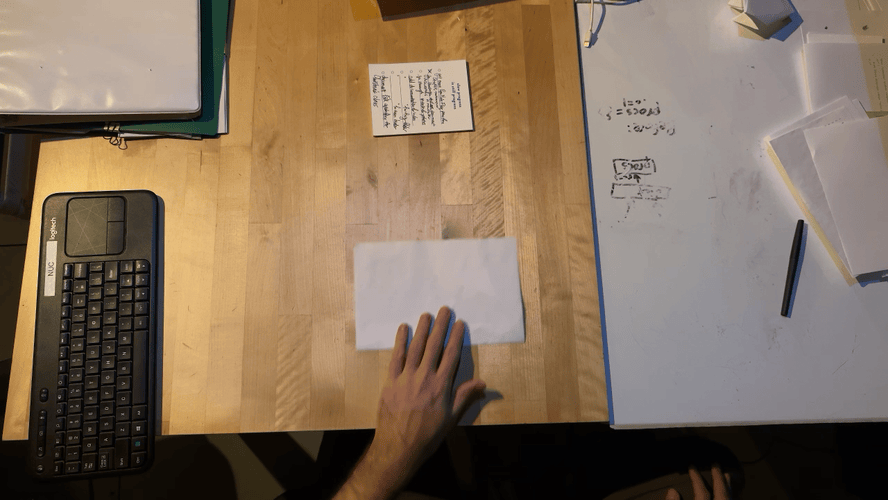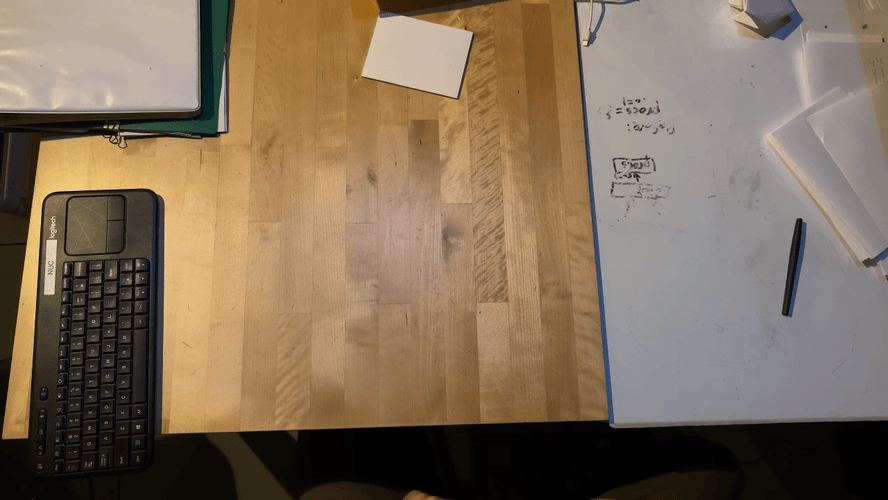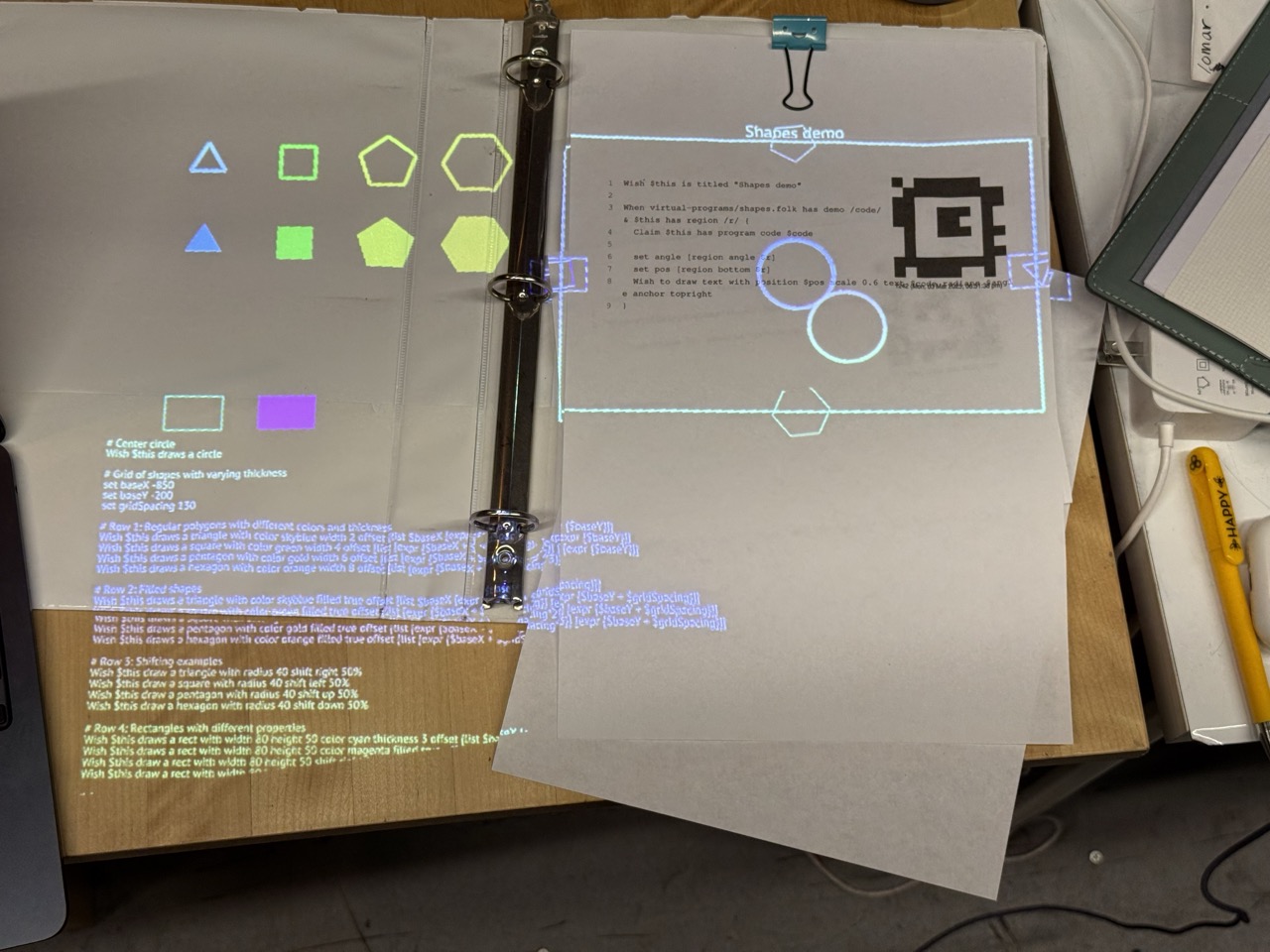Table of Contents
What Folk can do
Creative environments
- Jessie Grosen made a SuperCollider-based audio system using Folk. Here, she's pulling out an audio track, using 'hands' to carve subsections out of the track, then operating on those subsections:
- Ian Clester sound env
Kids and computing
- Vedran Budimcic has been building a Scratch-like environment in Folk. This month, he added support for multiple characters:
- Vedran: I think I only need to do a few more things before I can let me kids try to break it: 1. Put the cards on something thicker like cardboard. Easier for little hands. Maybe laminate as well. 2. Consider character actions from left to right instead of order of appearance. Right now it only considers the actions on the right of the “play” pages, but doesn't consider their order.
- Vedran also set up a Folk system on a toy train track. The train has a Folk tag on it, so the system knows its location, so it can play sounds as the train passes through different areas on the track:
- Omar: I like the three-dimensionality and materiality of this. It's no longer flat pieces of paper on a plane; it's a train on a real track with landmarks.
- Rob Fielding has an orbital simulation:
- “My solar simulation was a way in to learn folk. The kids keep coming back to my office to play with it - hoping this increases the interest in actually doing something. A 'kit' sounds more versatile and ultimately something I want to collect a library of so they can start to build.”
- See also Arcade Wise's ORBITALKIT
- (see below for more comments on folk2)
- Jacob Haip has been doing microcontroller integrations with Folk, so you can press a physical button or slide a real slider or light up real LEDs: he wrote a great note about these integrations and his use of the MQTT protocol
- Omar: I really liked this example of 4 buttons that play different songs on Spotify:
- More specific and approachable and fun physical interface than pages, little kid can play with it like a normal toy, but Folk makes it easy to 'rewire' and get into reprogramming (and to cross with other sensors and actuators in novel ways) because it's all Folk programs in the backend:
General capabilities
- The Folk programming language makes it easy to write a program that:
- Writes
Hello boxand outlines itself red with the code:Wish $this is labelled "Hello box" Wish $this is outlined red
- Can point at each other (notice the
RIGHT OF PROGRAMappear when the left program's green pointer hits the right) - Draw all sorts of shapes:
- Get a
camera slice(the area the camera sees above a program):
Teach math
- Mason Jones has started working on a linear algebra tutorial:
-
- You can put these programs together and vary the programs slightly to create booklets:
- Or use paper craft to make any program into a button:
- You can combine multiple programs to make folders that:
- Teach people how to make origami frogs:
- Or that explore stop motion animation:












